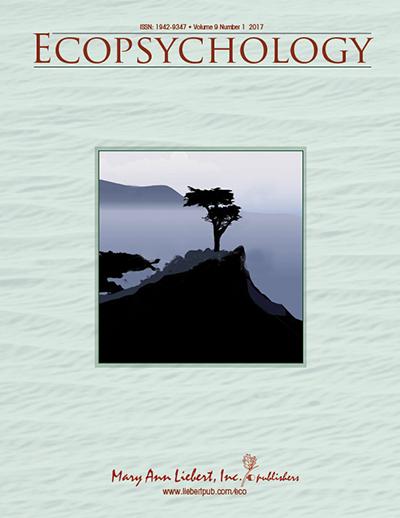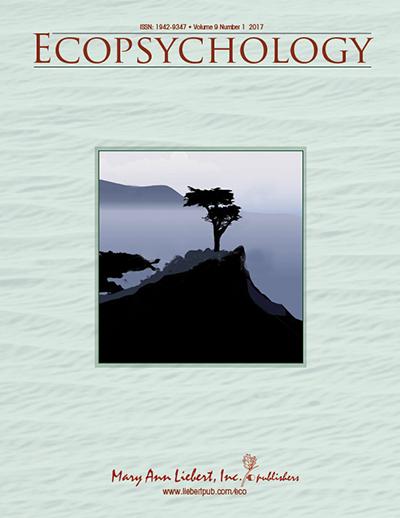
Credit: Mary Ann Liebert, Inc., publishers
New Rochelle, NY, July 5, 2017–A comprehensive look at the under-recognized problem of environmental sensitivity and related disorders that develop as a result of exposure to chemicals and other toxic factors is published in a special issue of Ecopsychology entitled "Ecopsychology and Environmental Sensitivities: Chemical, Electrical, and Beyond," from Mary Ann Liebert, Inc., publishers. The issue is available free on the Ecopsychology website until September 5, 2017.
William Meggs, MD, PhD, Brody School of Medicine at East Carolina University, Greenville, NC, contributed two articles to the special issue. In the article entitled "The Role of Neurogenic Inflammation in Chemical Sensitivity," he reviews the scientific evidence showing that environmental chemicals can trigger nerve fibers to release inflammation-inducing signals, leading to chemical sensitivity in some people. This may cause or worsen diseases of the respiratory and gastrointestinal tracts, skin, and musculoskeletal and nervous systems.
In "History of the Rise and Fall of Environmental Medicine in the United States," Dr. Meggs provides a comprehensive overview of how sensitivity to chemicals such as pesticides, preservatives, and inhalants was first discovered. Despite the potential for chemical sensitivity to contribute to increasingly common diseases such as obesity, diabetes, and depression, Dr. Meggs states that commercial interests and corporate profits have suppressed the growth of the environmental medicine field.
Alison Johnson, founder and chair of the Chemical Sensitivity Foundation, writes about "The Many Faces of Multiple Chemical Sensitivity" (MCS) and the terrible effects of this poorly understood and insufficiently researched condition. She provides multiple examples of people who have great difficulty finding places they can live or work due to MCS developed as a result of past exposures, such as veterans suffering from Gulf War syndrome, First Responders exposed to toxins at Ground Zero in New York City, and workers who have become sensitive to pesticides, petroleum products, and other chemicals and toxins.
"With Pam Gibson, PhD, from James Madison University as Guest Editor, this issue of Ecopsychology makes a bold move forward on this controversial and important topic," says Editor-in-Chief Peter H. Kahn, Jr., PhD, Professor, Department of Psychology and School of Environmental and Forest Sciences, University of Washington, Seattle, WA.
###
About the Journal
Ecopsychology is a peer-reviewed journal published quarterly online that seeks to reshape modern psychology by showing that it cannot stand apart from an intimate human connection with the natural environment. Against this backdrop, the Journal publishes original scientific research articles, as well as theoretical papers, case studies, nature writing, and reviews of important books and other media. Complete tables of content and a sample issue are available on the Ecopsychology website.
About the Publisher
Mary Ann Liebert, Inc., publishers is a privately held, fully integrated media company known for establishing authoritative peer-reviewed journals in many promising areas of science and biomedical research, including Sustainability: The Journal of Record, Environmental Justice, and Cyberpsychology, Behavior, and Social Networking. Its biotechnology trade magazine, GEN (Genetic Engineering & Biotechnology News), was the first in its field and is today the industry's most widely read publication worldwide. A complete list of the firm's 80 journals, books, and newsmagazines is available on the Mary Ann Liebert, Inc., publishers website.
Mary Ann Liebert, Inc. 140 Huguenot St., New Rochelle, NY 10801-5215 http://www.liebertpub.com Phone: (914) 740-2100 (800) M-LIEBERT Fax: (914) 740-2101
Media Contact
Kathryn Ryan
[email protected]
914-740-2250
@LiebertPub
http://www.liebertpub.com
Original Source
http://www.liebertpub.com/global/pressrelease/recognition-and-mechanisms-of-chemical-and-environmental-sensitivities-highlighted-in-special-issue-of-ecopsychology/2212/ http://dx.doi.org/10.1089/eco.2016.0045
############
Story Source: Materials provided by Scienmag





